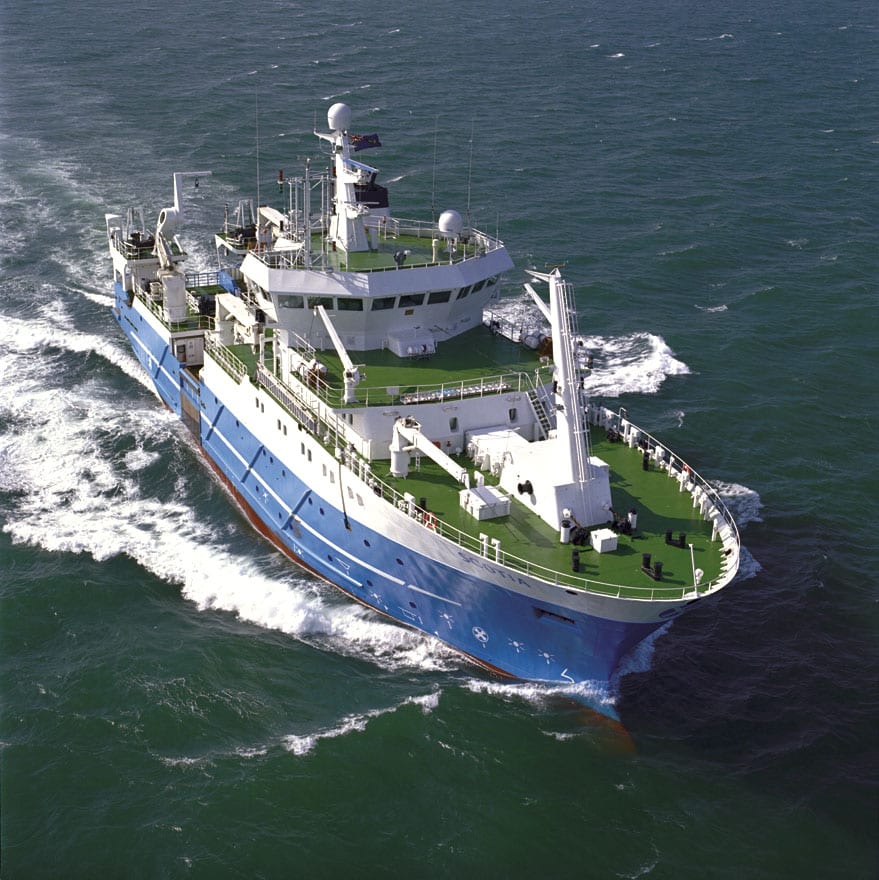Marine
Nephrops Burrowing Complexes
June 6, 2019 by Marine Directorate Communications No Comments | Category Marine Directorate Science, Research Vessel Surveys
MRV Scotia Programme
Survey: 0819S
Duration: 2-24 June 2019
Gear:
- 2 x Scotia BT175 60mm prawn trawls;
- 2 x Day grabs and 1 x sieving table;
- 2 x towed UWTV sledges;
- 3 x 600m umbilical towing cables and associated TV equipment (including back up);
- COMPASS work: VEMCO deck box, transponder and charging unit for acoustic release; and
- 100kg clump weight, two sensors, mooring line, shackles (one for each of six mooring sites).
Objectives:
- Obtain estimates of abundance and distribution of Nephrops burrow complexes at Fladen, in the North Minch, the South Minch, the Firth of Clyde, in the Sound of Jura and at Devil’s Hole. If time and weather permits, stations at the Noup may also be surveyed.
- Use the TV footage to record the occurrence of other benthic fauna as well as evidence of commercial trawl activity.
- Collect sediment samples at each station.
- Carry out trawling for Nephrops in order to obtain samples of Nephrops for size composition analysis.
- Collect samples of Nephrops from the trawls for comparison of reproductive condition and morphometrics in each of the different survey areas (Functional Units).
- Record and retain marine litter obtained from trawling as part of the MSFD.
- Recover COMPASS moorings at six sites on the west coast, and to deploy replacement devices at each site.
Procedures:
TV Objectives
The main areas in which the underwater television (UWTV) survey will take place (see Figure 1 below) have been surveyed on regular basis for a number of years, and the data used in annual fisheries management advice. A combination of two approaches will be used to derive the survey positions: a stratified random approach and fixed stations.
It is anticipated that the vessel will work south along the western side of the Minches and then on towards the Clyde, surveying TV sites and carrying out trawls as required. The timing of the half landing will depend on how well the work has progressed and berth availability.

Figure 1: Areas to be surveyed during the Nephrops burrow abundance
underwater TV (UWTV) cruise 0819S
If the Clyde leg of the survey has already been completed prior to the half landing, the survey will resume in the Sound of Jura, followed by the remaining South and North Minch stations whilst working north. If the Noup was not surveyed in the first leg of the survey a small number of stations at the Noup may be attempted before returning to Fladen to complete any additional stations (if required), or those not covered on the first half. The survey will conclude once the stations and any trawling at the Devils Hole have been completed.
Throughout the survey sledge deployments and TV observations will be carried out 24 hours a day, weather permitting. Whilst on the West Coast there may be some occasions during the hours of darkness and in areas of high creel densities where TV operations are suspended for a short time to avoid any potential gear conflict.
At each TV station a video camera mounted on to the sledge will be towed along the seabed for approximately 10 minutes at approximately 0.7 knot and in to the tide – the ship’s dynamic positioning will be required for this. Nephrops burrows observed, individual Nephrops and other benthic fauna will be recorded onto DVD for later analysis. The depth and distance travelled by the sledge, as well as camera height from the seabed will be recorded automatically. Where practical, sediment samples will be taken using the mini van Veen grab mounted on the sledge.
Trawl caught samples of Nephrops will be collected and information on size composition, maturity and morphometrics will be recorded. Up to five trawls may be made in Fladen with a maximum of three tows in each of the other survey areas. Where possible trawls will be carried out on different sediment types in each area, as defined by British Geological Survey data.
COMPASS Objectives
In addition to the regular UWTV work, six moorings located on the West Coast between Tolsta Head and Stanton Banks are required to be recovered and replacement devices redeployed at the same site (see Table 1). This operation replicates the work carried out on the Scotia Nephrops TV survey 0818S in 2018. The devices will be retrieved by acoustically releasing a buoy which will rise to the surface.

Table 1: Location of the six COMPASS moorings to be recovered and replacement devices to be redeployed
Tags: British Geological Survey Data, Devil's Hole, Firth of Clyde, fisheries, MRV Scotia, North Minch, Noup, research, research vessels, sampling, science, Scotia, Sound of Jura, South Minch, Stanton Banks, Survey, Tolsta Head, underwater tv



Leave a comment